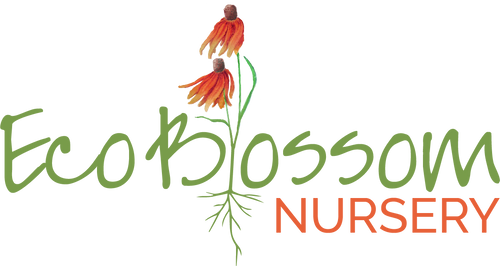Ulmus crassifolia (Cedar Elm)
Cedar Elm is a hardy shade tree with excellent drought tolerance. It is adaptable to a broad range of soils, including heavy clay, compacted soils, and tolerates alkaline or salty soils. It is a great choice for urban setting since it can deal well with urban pollution and is an excellent choice for tight spaces.
Cedar Elm has an upright, rounded crown of drooping, dense branches and small, sandpaper-like leaves. It provides brilliant yellow fall color. The leaves compost nicely, so there is no need to raking. Young trees have corky "wings" on their branches that disappear as the trees begin to mature. It is susceptible to Dutch elm disease but less so than American Elm. Known to cause allergy reactions.
The Mourning Cloak and Question Mark butterflies use Cedar Elm for larval food. Several bird species thrive on the elm seeds; squirrels eat the buds and seeds.
Planting Instructions: If the tree is buried too deep in the container, remove excess soil to uncover root collar. Loosen exterior roots gently. If the plant is root-bound, the outer roots may be cut in several places. Place the tree in the hole so that the root collar sits a bit above the ground level since the soil will settle some. Backfill the hole using soil that was dug out. Avoid adding non-native soil if possible. Do not add any soil to the top of the root ball. Pack the loose soil in the hole with your hands to avoid creating air pockets. Add mulch making sure it is at least 3-5 inches away from the tree trunk. Water deeply.
AT A GLANCE
| Texas native | Yes |
| Water use | Medium |
| Sun exposure | Sun to part shade |
| Bloom time | Fall |
| Mature height |
30-60 ft |
| Mature width | 20-30 ft |
| Attracts | Butterflies, birds, mammals |
| Host plant |
Morning Cloak and Question Mark butterflies. |
DISTRIBUTION MAPS
 Present in state Present in state |
 Present in county and native Present in county and native |
 Native to North America, but adventive & escaped in state Native to North America, but adventive & escaped in state |
 Not present in state Not present in state |
 Present and rare, native in county Present and rare, native in county |
 Previously present, now extinct Previously present, now extinct |
 Questionable presence (cross-hatched, regardless of color) Questionable presence (cross-hatched, regardless of color) |










